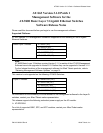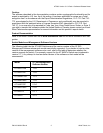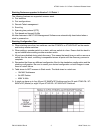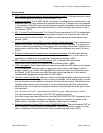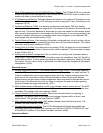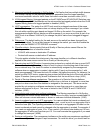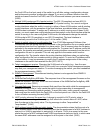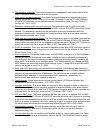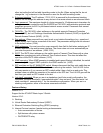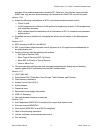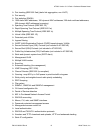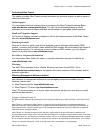
AT-S63 Version 3.1.0 Patch 1 Software Release Notes
PN 613-000915 Rev A 8 Allied Telesis, Inc.
File upload or download. The switch’s response to management instructions may be slow
while it uploads or downloads a file to the file system.
Flow control and back pressure. Flow control and back pressure are operational among
devices connected to ports 1 through 12 or ports 13 through 24 on the AT-9424T/GB and
AT-9424T/SP switches, but not between devices connected to ports 1 through 12 and 13
through 24. (1321, 1322)
Reserved multicast traffic and port mirroring. The destination port of a port mirror may
transmit duplicates of some reserved multicast traffic, such as STP BPDUs and other control
packets. The duplication results from the destination mirror port transmitting both the
reserved multicast traffic it receives from flooded multicast traffic and the same multicast
traffic from the mirrored ports. (3055)
Fiber optic port configuration display. The Auto-Negotiation, speed, and duplex mode settings
in the menus interface for ports 23 and 24 on the AT-9424T/GB and AT-9424T/SP switches
always reflect the settings of the corresponding twisted pair ports 23R and 24R. They do not
reflect the current settings of an active GBIC or SFP fiber optic port. (3047)
GVRP compatibility. There may be some compatibility issues with GVRP and other switches.
To work around this issue, change the Join and Leave time from the defaults to: Join Timer =
60 and Leave Timer = 120.
Port configuration. The speed, duplex mode, and MDI/MDIX settings of a 10/100/1000Base-T
twisted pair port are changed as a unit when multiple ports are configured simultaneously.
The settings of the lowest numbered port being configured are automatically copied to the
other ports. For example, if you configure ports 1 to 4 simultaneously and change the MDI/
MDIX setting, the speed and duplex mode settings of port 1, along with the new MDI/MDIX
setting, are copied to ports 2 to 4. (1262)
Static and LACP port trunks and load distribution methods. The following load distribution
methods for static and LACP port trunks are nonfunctional: source IP address, destination IP
address, and source/destination IP addresses. The switch uses source MAC address,
destination MAC address, or source/destination MAC addresses, respectively, if a
nonfunctional load distribution method is selected.
Jumbo frames. Frame loss may occur when jumbo frames (1522 bytes or larger) are
transferred to more than two ports. (1412, 2783, 2792)
Xmodem downloads. The switch does not respond to echo requests or send or respond to
STP BPDU packets during an Xmodem download of system software. Also, echo request
responses are slowed when there is a TFTP transfer in progress and the echo requests are
received within the same port group as the TFTP server. (1663, 1582)
SFP and GBIC ports. The switch considers the fiber optic port on an optional SFP or GBIC
module in the AT-9424T/GB and AT-9424T/SP switches as active even if the port is receiving
a signal but has not established a valid link with the remote node. If an optional fiber optic port
loses or is unable to establish a link but is receiving a signal, it remains as the active port and
the switch does not activate the corresponding twisted pair port 23R or 24R. (2850)
Web browser interface. The web browser interface works best with Microsoft Internet
Explorer version 6.0 and above. Results using other versions or other web browser
applications may vary.
Configuration files. Do not use Microsoft NotePad to edit or view a configuration file. Some
versions of NotePad may add formatting codes to the file. Use WordPad instead or some



